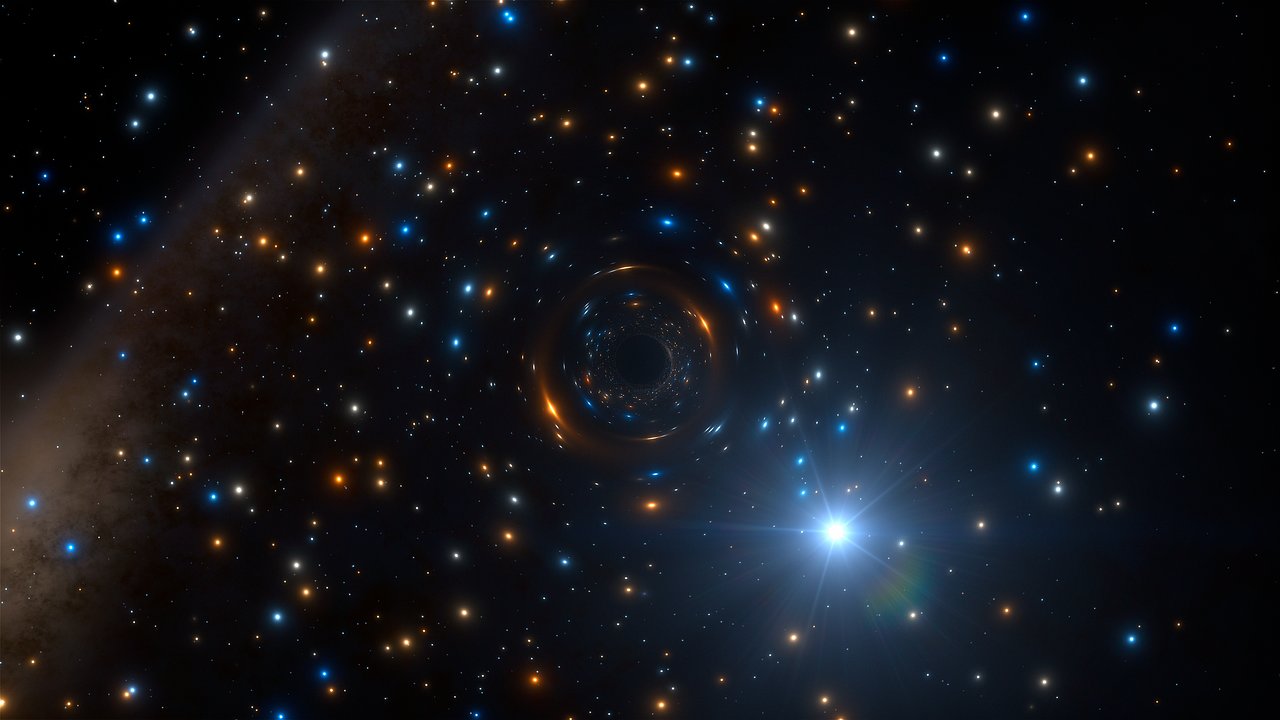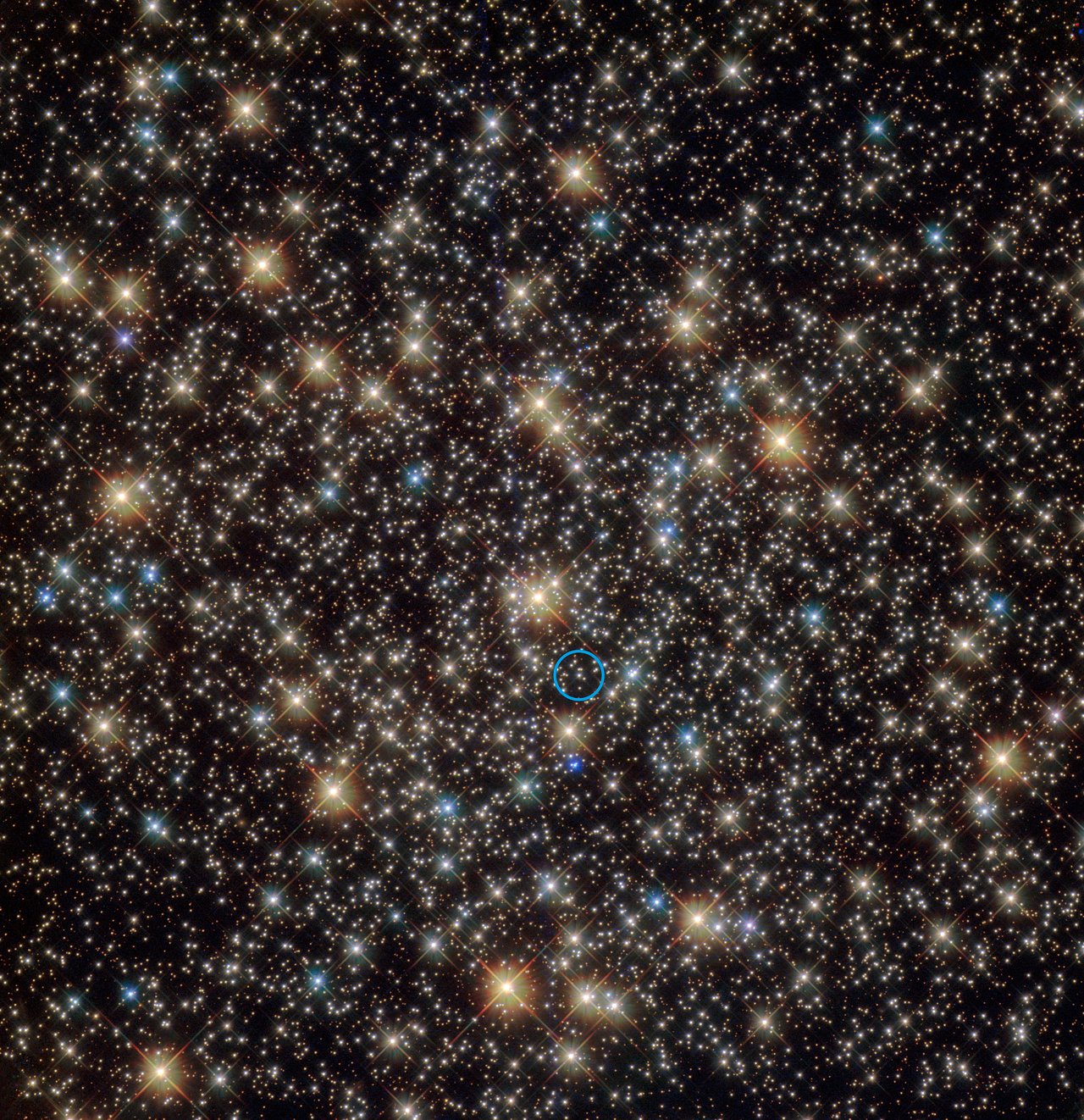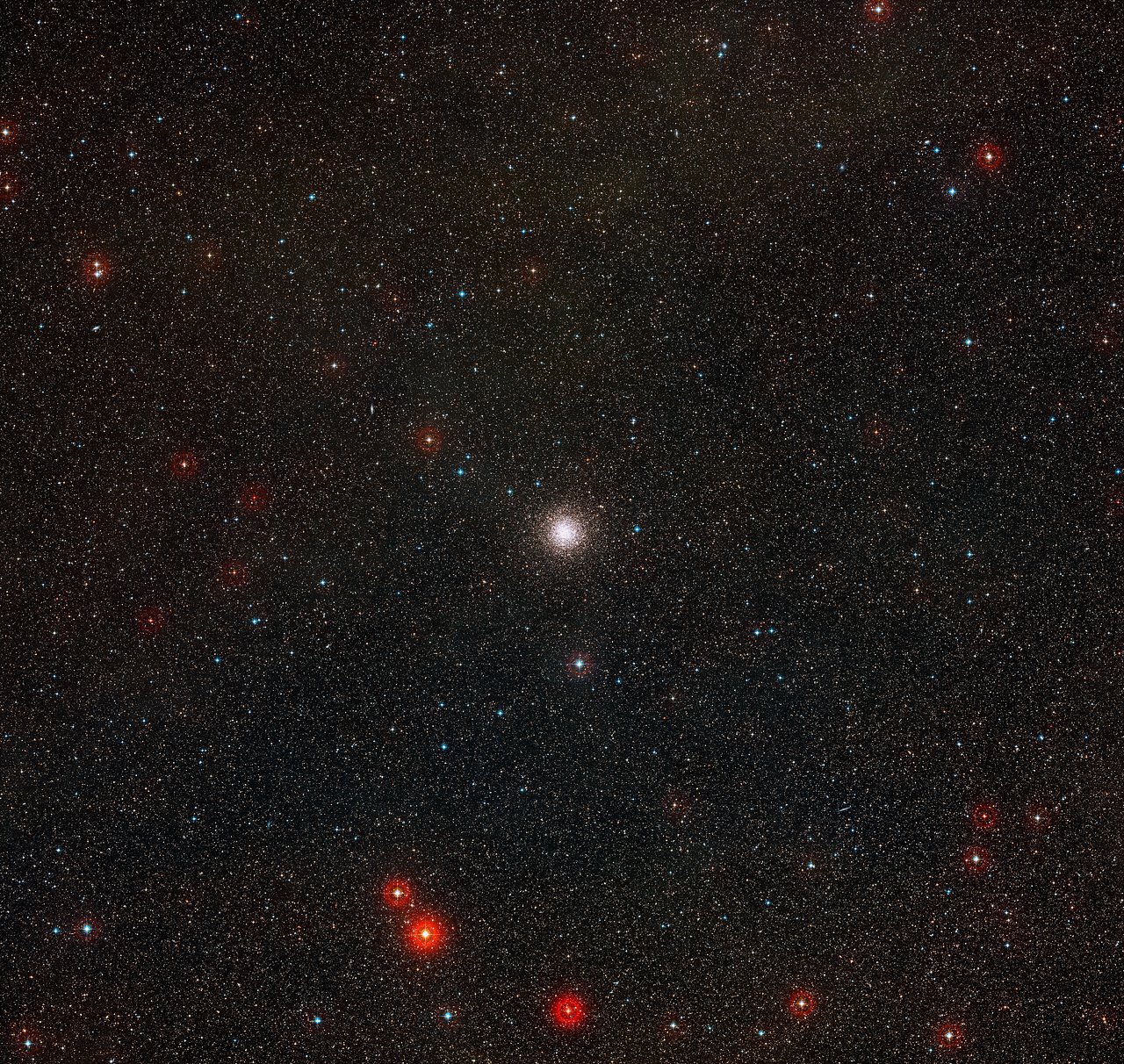Star's Odd Moves May Reveal Secret Black Hole
A distant star in the cluster NGC 3201 that's exhibiting odd behavior may be drawing attention to a secret. A team of international astronomers thinks it's behaving that way because the star is orbiting a black holethat has four times the mass of the sun.
The team saw the star moving backward and forward at speeds of several hundred kilometers per hour, in a cycle that repeats every 167 days. [The Strangest Black Holes in the Universe]
"It was orbiting something that was completely invisible, which had a mass more than four times the sun — this could only be a black hole," Benjamin Giesers, lead author on the new research and an astrophysicist with the University of Göttingen in Germany, said in a statement.

Unlike active black holes, the black hole in this system — if it truly exists — isn't swallowing matter or expelling gas. That's why it's so hard to spot. The star is roughly 0.8 times the mass of the sun. Because of the star's movements around the invisible black hole, the researchers estimate that the black hole's mass is about 4.36 times the mass of the sun.
If confirmed, this would be the first black hole that astronomers have ever been found in a globular cluster — a densely packed group of ancient stars — by looking at the black hole's gravitational pull on another object. The find was spotted using the European Southern Observatory's MUSE instrument on the Very Large Telescope in Chile.

ESO officials said in the statement that this find will help astronomers understand how globular clusters and black holes are formed, as well as the origins of gravitational waves — ripples in space-time caused by huge gravitational interactions.

"The relationship between black holes and globular clusters is an important but mysterious one. Because of their large masses and great ages, these clusters are thought to have produced a large number of stellar-mass black holes — created as massive stars within them exploded and collapsed over the long lifetime of the cluster," ESO officials stated.
Get the Space.com Newsletter
Breaking space news, the latest updates on rocket launches, skywatching events and more!
"Recent detections of radio and X-ray sources in globular clusters, as well as the 2016 detection of gravitational-wave signals produced by the merging of two stellar-mass black holes, suggest that these relatively small black holes may be more common in globular clusters than previously thought," they added.
Follow us @Spacedotcom, Facebook and Google+. Original article on Space.com.
Join our Space Forums to keep talking space on the latest missions, night sky and more! And if you have a news tip, correction or comment, let us know at: community@space.com.

Elizabeth Howell (she/her), Ph.D., was a staff writer in the spaceflight channel between 2022 and 2024 specializing in Canadian space news. She was contributing writer for Space.com for 10 years from 2012 to 2024. Elizabeth's reporting includes multiple exclusives with the White House, leading world coverage about a lost-and-found space tomato on the International Space Station, witnessing five human spaceflight launches on two continents, flying parabolic, working inside a spacesuit, and participating in a simulated Mars mission. Her latest book, "Why Am I Taller?" (ECW Press, 2022) is co-written with astronaut Dave Williams.









